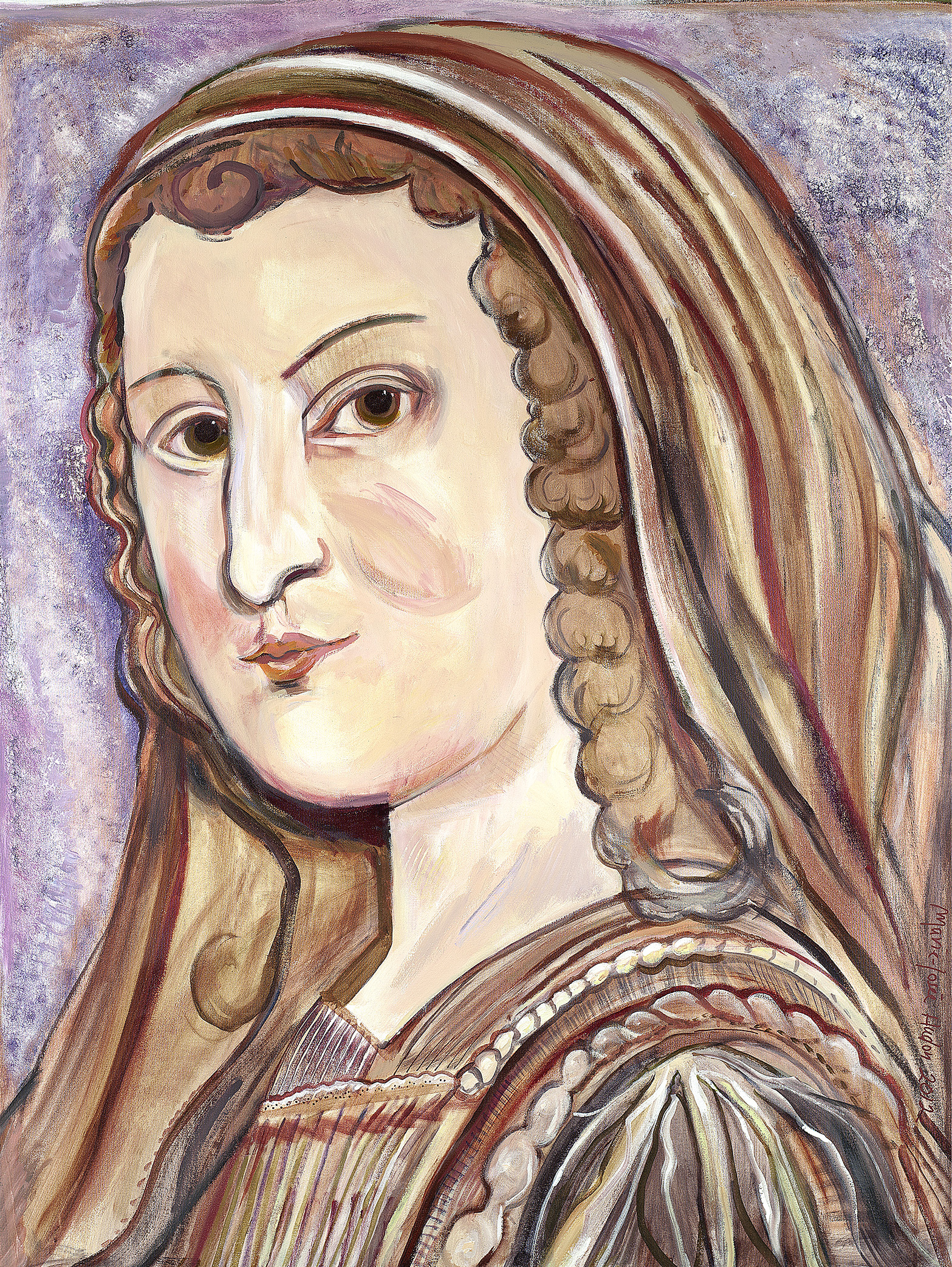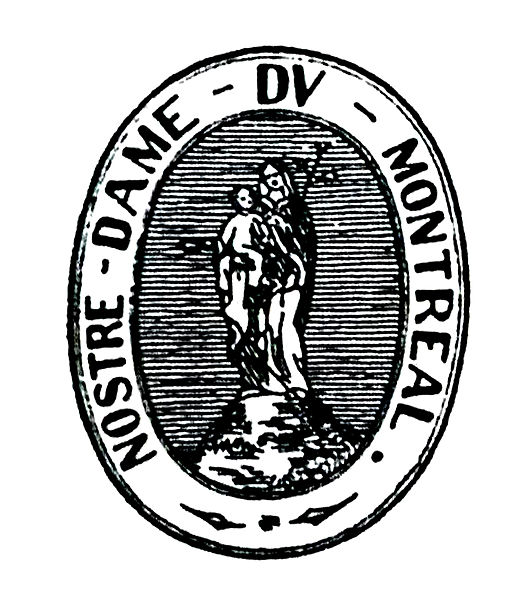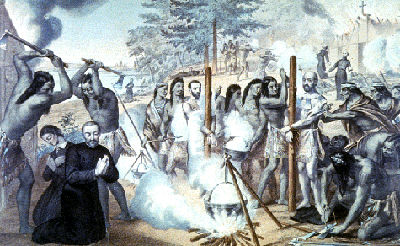Paul de Chomedey, Sieur de Maisonneuve, French governor, military officer (born 13 February 1612 in Neuville-sur-Vanne, France; died 9 September 1676 in Paris). Along with Jeanne Mance, he is considered the co-founder of Ville-Marie, the French colonial outpost that grew to become Montreal. Maisonneuve was also the first Governor of Montreal.

Early Life
Paul de Chomedey was baptized on 15 February 1612. His father, Louis de Chomedey, was a French nobleman and seigneur of Chavannes, Germenoy-en-Brie, Charon and other places later. (See also Seigneurial System.) His mother was Marie de Thomelin, also of noble birth, and Louis’ second wife. Paul was Louis’ first son and second child after his older sister. Later on, he also had another sister and one brother.
Little is known about Paul’s youth. He grew up in the family’s manor house in Neuville-sur-Vanne. In 1614, when he was two years old, his father Louis gained the Maisonneuve estate.
Paul joined the French army at the age of 13. He is believed to have first seen combat shortly after, in the Spanish Netherlands during the Eighty Years War.
Establishment of Ville-Marie
Paul de Chomedey de Maisonneuve was inspired by the religious fervour of his era, as well as the Jesuits’ writings. He was a natural fit for the Société Notre Dame de Montréal ― a French religious organization which aimed to establish a missionary colony on the island of Montreal. The purpose was to convert the Indigenous inhabitants of the land to Catholicism. (See also Population Settlement of New France.)
Jérôme Le Royer de La Dauversière and the Jesuit priest Charles Lalemant chose Paul de Chomedey de Maisonneuve to be a co-founder of the future colony of Montreal.
In May 1641, Maisonneuve, Jeanne Mance and the other settlers left the French port of La Rochelle to make their way to New France. They wintered near Quebec City, before making their way farther up the St. Lawrence River to take possession of the island of Montreal.
On 17 May 1642, Maisonneuve and about 50 other settlers established the settlement of Fort Ville-Marie. The fortified outpost was located roughly at the same location as an earlier settlement established by Samuel de Champlain in 1611. The location of Fort Ville-Marie is about the same as the present-day Pointe-à-Callière archeological museum in Montreal’s Old Port neighbourhood.
Governor of Montreal
Upon taking possession of the island of Montreal, Paul de Chomedey de Maisonneuve became the colony’s governor. Work to develop the outpost began immediately. Additional ships brought more settlers. Supplies started arriving within a few months.
At the end of 1642, the small colony faced one of its first major challenges: the St. Lawrence River flooded after a surprise thaw days before Christmas. The floods threatened to overcome and destroy the flimsy outpost, which was almost entirely made of wood in its earliest days. Maisonneuve made a promise to the community’s priests and read a declaration that if God spared the community, he would carry a cross and plant it on the summit of Mount Royal, above the settlement. The floodwaters started receding at midnight on Christmas, and Maisonneuve made good on his promise. The cross that stands atop Mount Royal today commemorates the one planted by Maisonneuve on 6 January 1643.
Though the French settlers aimed to convert Indigenous people to Christianity, they did not get along well with all First Nations. While the French had excellent relations with Algonquin peoples, their relations with the Haudenosaunee were far more strained. The Haudenosaunee already had strong claims to the region and business relationships with English and Dutch fur-trading colonies farther South (in modern-day New York State). They perceived the French colony as an unwelcome intrusion. It's believed that Haudenosaunee attacks on the French colonists at Ville-Marie began as early as the summer of 1643. The colonists at Ville-Marie regularly felt themselves being watched by the Haudenosaunee. (See Iroquois Wars.)
A major confrontation occurred on 30 March 1644, when the outpost’s guard dogs sensed the Haudenosaunee approaching in the woods. Alerted to their presence, Maisonneuve told the 30 or so able-bodied men to arm themselves for a fight. The French colonists were seriously outnumbered but chose to fight to avenge their fellow colonists who had been killed the year before. Maisonneuve led his troops until they ran out of powder and shot, at which point the colonists ran back to the relative safety of Fort Ville-Marie. Maisonneuve stayed behind so his men could retreat. He was overtaken by a Haudenosaunee chief and had to fight. Though the Haudenosaunee chief initially had the upper hand, Maisonneuve killed him with a shot from his last loaded pistol. The Haudenosaunee suspended their attack to retrieve their fallen chief while Maisonneuve returned to his fort. He was hailed as the colony’s saviour. The skirmish is generally believed to have occurred near the site of Montreal’s present-day Place d’Armes.
Maisonneuve travelled between France and Ville-Marie several more times. He often brought back volunteers to support the fledgling colony, which steadily grew during this time despite frequent wars with the Haudenosaunee. (See also Population Settlement of New France.)
In 1665, he was ordered to return to France, ending his 23 years running the colony. He retired to Paris and died there in relative obscurity 11 years later.
Legacy
Paul de Chomedey de Maisonneuve is recognized and commemorated in several ways in Montreal and Quebec.
Since 1895, a monument in his honour by sculptor Louis-Philippe Hébert stands in the centre of Montreal’s Place d’Armes. A statue of Maisonneuve stands atop the monument which features four bas-reliefs depicting events from the early days of the colony.
In 1967, Collège Sainte-Croix is renamed as Collège de Maisonneuve. (See CEGEP.)
In 1985, the federal government recognized Maisonneuve as a National Historic Person. A number of plaques in Old Montreal also highlight Maisonneuve’s role in establishing Ville-Marie.
Several places in Montreal are named after Maisonneuve. Today’s Hochelaga-Maisonneuve neighbourhood bears his name. It’s also the case for the park next to the Olympic Stadium. In 1966, the Boulevard de Maisonneuve was created, joining a number of existing streets to create a major east-west route that passes through downtown Montreal. There is also a Rue Saint-Paul in Old Montreal, as well as a Rue Chomedey located in Montreal’s Shaughnessy Village neighbourhood.


 Share on Facebook
Share on Facebook Share on X
Share on X Share by Email
Share by Email Share on Google Classroom
Share on Google Classroom



